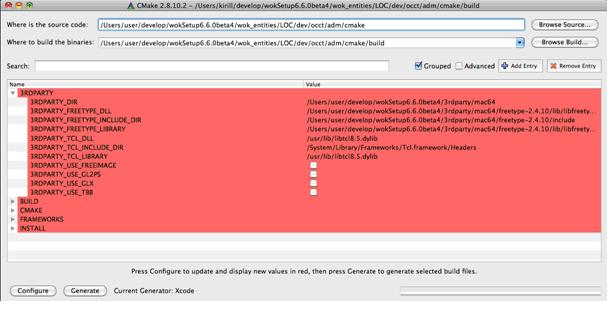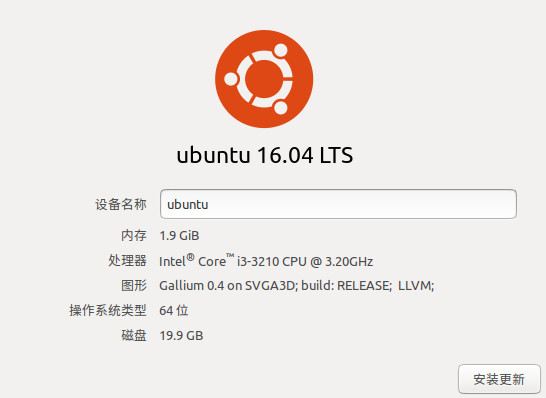

- #Cmake linux environment variables install
- #Cmake linux environment variables portable
- #Cmake linux environment variables license
- #Cmake linux environment variables windows
As an example, create a variable called EXAMPLE with a text value. Wiki page “ CMake Cross Compiling” by Kitware. The simplest way to set a variable using the command line is to type its name followed by a value: VARIABLENAME variablevalue 1.Official CMake documentation of “ Cross-Compiling for Linux“.Of course, /path/to/toolchain-im圆.cmake, /path/to/project and project are only placeholders for the toolchain file path, the directory path containing the project’s top-level CMakeLists.txt and the project’s name, respectively. $ cmake '-GCodeBlocks - Unix Makefiles' -DCMAKE_BUILD_TYPE:STRING=Debug -DCMAKE_CXX_COMPILER:STRING=$SYSROOTS/x86_64-pokysdk-linux/usr/bin/arm-poky-linux-gnueabi/arm-poky-linux-gnueabi-g++ -DCMAKE_TOOLCHAIN_FILE:FILEPATH=/path/to/toolchain-im圆.cmake /path/to/project We run CMake for our Qt application and cross-build it with the following commands:
#Cmake linux environment variables license
Feel free to adapt the toolchain file to your needs and use it in your projects – but keep the license notice. The syntax for declaring a variable and setting it if it is not already set is: set(MYCACHEVARIABLE 'VALUE' CACHE STRING 'Description') This will not replace an existing value. Some variables are already here, like CMAKEBUILDTYPE. Here is the complete toolchain file toolchain-im圆.cmake under MIT license. If you want to set a variable from the command line, CMake offers a variable cache. We trust CMake to come up with the right default options for the linker. If the linker needs special flags, we can set them through the variables CMAKE_EXE_LINKER_FLAGS, CMAKE_SHARED_LINKER_FLAGS and CMAKE_STATIC_LINKER_FLAGS.

Of course, you can adapt the COMPILER_FLAGS to your own needs. Otherwise, we’ll see the failing compiler checks described above. It is important that we force the change of the variables CMAKE_C_FLAGS and CMAKE_CXX_FLAGS in CMake’s cache. Set(TOOLCHAIN_PREFIX $ENV" CACHE STRING "" FORCE) We specify where CMake can find the C and C++ compilers.
#Cmake linux environment variables windows
We use CMAKE_CROSSCOMPILING in CMake files to set variables differently in native and cross builds. On Linux/macOS,The variable CMAKE_SYSTEM_NAME sets the variable CMAKE_CROSSCOMPILING to true. Our target system runs on Linux powered by an NXP i.MX6, which uses the armv7-a architecture. The first two lines set the operating system and architecture of the target system. We are now ready to write the CMake toolchain file. Especially, we need not run the script environment-setup-cortexa9hf-neon-poky-linux-gnueabi to initialise the Yocto-SDK and set two dozen environment variables. These two environment variables are all we need for cross-compiling with CMake. In summary: We must set two environment variables in the Linux shell, in which we want to run CMake and the cross-build later.Įxport QT_BIN_PATH=/opt/Qt5.7.1/5.7/gcc_64/bin If we installed Qt in /opt/Qt5.7.1, for example, we set the environment variable QT_BIN_PATH to /opt/Qt5.7.1/5.7/gcc_64/bin. Then, we must tell CMake where to find the utilities. Typically, this Qt version is installed on the host already, because we develop the application with this Qt version on the host.
#Cmake linux environment variables install
On the host and build computer, we install the same Qt version as is used on the target device. Unfortunately, Yocto builds these utilies for the ARM-powered host. These utilities run on the Intel-powered host – as the whole the cross-build does.

In addition to the C++ compiler, we need Qt utilities like qmake, moc and rcc to build a Qt application. We must set an environment variable SYSROOTS to /opt/im圆/sdk/sysroots such that CMake knows where to find the host and target sysroot. The root file system and files needed for cross-builds like headers are located in /opt/im圆/sdk/sysroots/cortexa9hf-neon-poky-linux-gnueabi. The GCC toolchain, which run on the x86_64-based host computer, is located in /opt/im圆/sdk/sysroots/x86_64-pokysdk-linux. We built the embedded Linux system with Yocto. I used Yocto Morty and CMake v3.5.1 (as it comes with Ubuntu 16.04 LTS). I am going to give a line-line by line explanation of the CMake toolchain file. As we use CMake for building our Qt application, we must create a CMake toolchain file. Next, we want to cross-compile our own Qt application. Į.g.: add_custom_target(newtarget $" args.We have succeeded in building embedded Linux with Yocto for a quad-core NXP i.MX6 (ARM Cortex-A9).
#Cmake linux environment variables portable
A portable way of setting environment variables for a custom target is to use CMake's command-line tool mode command env: env.


 0 kommentar(er)
0 kommentar(er)
